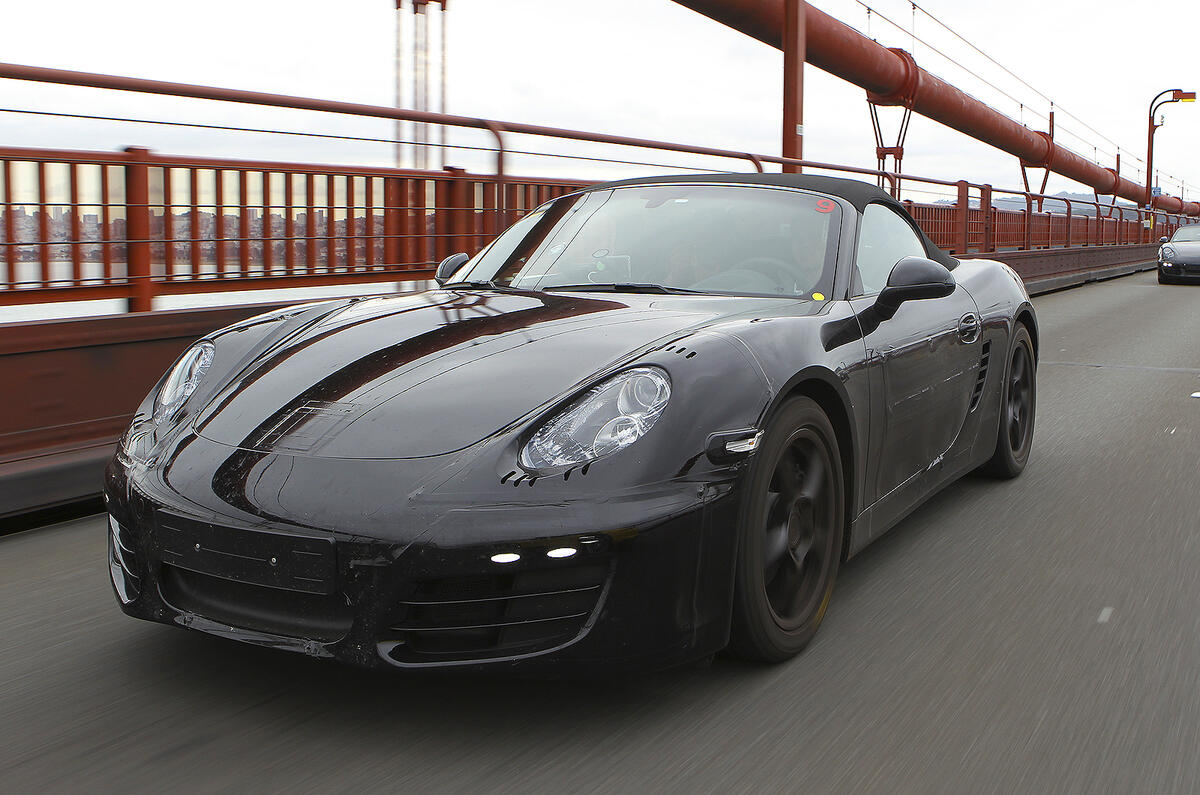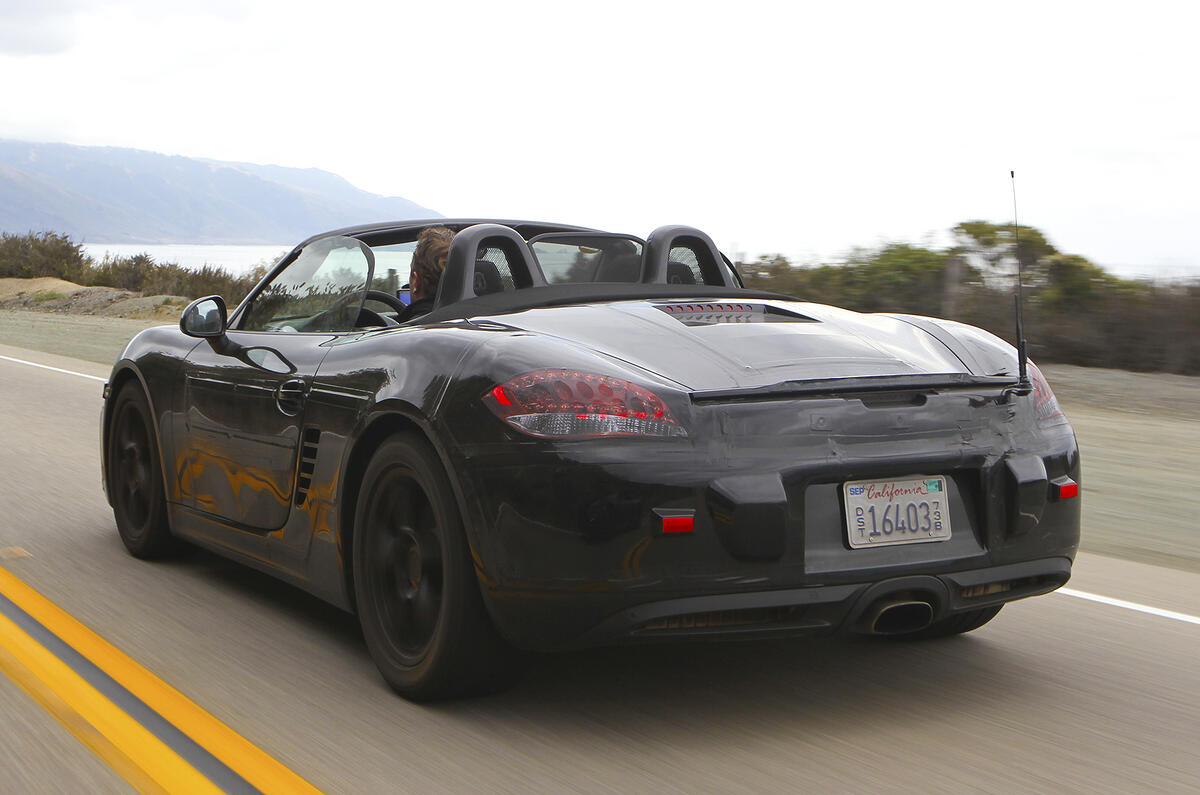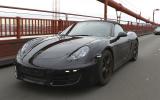The third-generation Porsche Boxster is now just four months away from a planned debut at next year’s Geneva motor show. But before the German car maker’s boss Mathias Muller granted the mid-engined roadster a definitive production go-ahead back in October, Autocar joined a team of development engineers in California as they put the final test miles on prototype versions.
Codenamed 981, the new Boxster represents a big break, both in terms of engineering and philosophy, from its predecessor. Following on from developments brought to the latest 911, the strict two-seater is not only larger dimensionally but also sports an aluminium bodyshell that is claimed to be the “the lightest car in its class,” according to Boxster development boss Hans-Jürgen Wӧhler.
See pics of the all-new Porsche Boxster
It’s also slightly longer and a good deal wider than before, while a newly developed, automatically-operated cloth hood marginally reduces height, giving it a more elongated appearance.
Seeing the new car up close for the first time reveals other key modifications, including significantly larger wheel houses and larger brakes, although their exact dimensions are yet to be confirmed.
See our completely undisguised Porsche Boxster spy pics
The larger aluminium body is supported by a thoroughly new chassis that receives a wheelbase that has been bumped up from 2415mm to somewhere in the vicinity of 2540mm along with a front track that has been increased in length by around 52mm to take it up to 1542mm. While there are no carry over components within the suspension, the architectural elements remain intact, with MacPherson struts sited up front and multi-links at the rear. But as Wӧhler points out, the spring rates have been increased while the damping reduced in firmness.
A bigger change is the switch from hydraulic power steering to the electro-mechanical system that recently debuted on the new 911. Purists will scream, but Wӧhler says, “you can rest assured, we haven’t stuffed it up. Drive the new model next to the old one and you can’t tell the difference – it’s that good.”
If there’s one familiar aspect about the latest version of Porsche’s rear wheel drive roadster it is its naturally aspirated six-cylinder direct injection petrol engines. Like the new 911 Carrera, however, they feature a smaller capacity.
We’re told the base 2.9-litre unit in the second generation Boxster makes way for a 2.7-litre engine, while the 3.4-litre mill in the Boxster S is supplanted by a 3.2-litre powerplant. Despite the downsizing, Wӧhler says both engines develop greater power than those they replace. Porsche had yet to receive final certification figures at the time of our ride experience, but expect something around 270bhp and 325bhp respectively.
















Add your comment